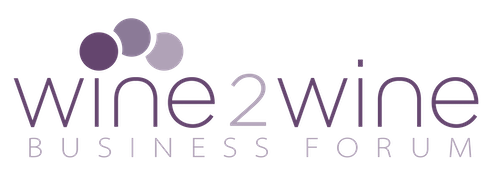3 examples of Storytelling Marketing for the world of wine

Storytelling Marketing is one of the most powerful tools available to empower your brand. When a consumer approaches a shelf to buy wine, there are many factors that influence their choice. One of the main factors is the opportunity to buy a personal experience and gain from that, in addition to purchasing that product. What better way is there to sell a product than by conveying a story to the customer? It persuades them to buy the product by making them feel involved in a positive way.
Storytelling is fundamental for Wine Marketing. By building a precise identity around your product, through the narration of the events that characterize it you make it special, you can give your target customer a virtual journey. This will not only serve to effectively share useful information about the purchase, but will also make it easier for the customer to approach the brand and create a personal bond with them.
Meaning of Storytelling: why does it work?
If you want to define your product, Storytelling Marketing is a strategy that uses facts and fiction to communicate promotional information to the target audience. Stories may or may not be real, but it is essential that they are able to convey a message effectively, as well as being able to sound genuine, creative and inspirational.
In short, the stories told must evoke a response akin to Emotional Branding, to arouse a specific effect on consumers who come into contact with the brand. Oftentimes a purchase choice is in fact due to an emotional response to the product: if the product is capable of telling a convincing story, this in turn triggers a response, imprinting on the reality of the listener.
Narrative communication works because it is an artform innate to us, and therefore transcends time, place, and culture. Ancient civilizations used Storytelling as their primary form of transmission and processing of knowledge. It has always been a tool for linguistic development as well as a great vehicle to convey knowledge to children. It is a universal way of organizing and expressing emotional experiences, just take a look at examples such as novels, theatre and cinema.
Every company in the Wine Industry has a story to tell about itself, its wines and how it chooses to conduct its daily activities. Working with this material through the refined tools of Storytelling Marketing can prove to be a real weapon in the battle to winning over the customer and promoting the brand – it is an element that does not devalue anything – and is in itself very cost effective. Below we show 3 ways that Story Marketing can specifically relate to the world of wine, and relay topics that will be covered during the two days of wine2wine 2018.
Audio Storytelling
Modern life today is more focused on Audio Storytelling, and marketing through it becomes a strategic and captivating method. The great advantage of this formula is that it does not require exclusive attention: listening can take place even while we are simultaneously engaged in something else such as traveling or performing simple tasks. For the world of wine, podcasts and online radio shows are proving particularly successful: Italian Wine Podcast – to single out just one – is ample evidence of this. Modern mobile technologies make it possible to access content from anywhere and in any situation; the fact that stories are shared by professionally trained speakers that can take on characters, this increases its communicative effectiveness.
Visual Storytelling
Images are among the most direct means of communication for reaching a wide audience, it involves them and arouses empathy. The effectiveness of Visual Storytelling is scientifically proven, it has been scientifically proven that the immediacy of a message relayed via an image is superior to that of pure text: this has to do with the mechanisms through which the human brain processes sensory stimuli. Storytelling Marketing that exploits the power of images can take different forms of visual narration. We have already talked about the potential of some new technologies for the Wine Industry. An eloquent example of how imagery Storytelling can be used is within the gigantic realm of Social Networks such as Instagram and Pinterest, platforms that are based on communication through photographs and videos.
Event Storytelling
Communication through an event or a fair can prove to be a great way to utilize Storytelling Marketing. Conversely, sharing how the concept of a given event was born and inspiring the public with the right amount of expectation and identification – as with respect to an excellent narrative – is a powerful promotional tool for the event itself. Storytelling through the organization of wine events is extremely functional for Brand Exposure and it creates engagement because it involves all the senses: sight, sound, smell, touch and taste. If we want to tell a story well, this means coaxing the public into an experience, and during an event this can be done literally. Every message offered during this immersive experience will also be much more easily remembered.
Storytelling Marketing at your fingertips
Jerome S. Bruner, the American luminary of psychology, wrote that adventures happen to those who can tell them. Storytelling Marketing is therefore within the reach of any company in the Wine Industry. Participate in the sessions and workshops that you find on the 2018 wine2wine programme, it is here that you will gain the skills on how to use this great method and learn all the advantages it can bring to your business
